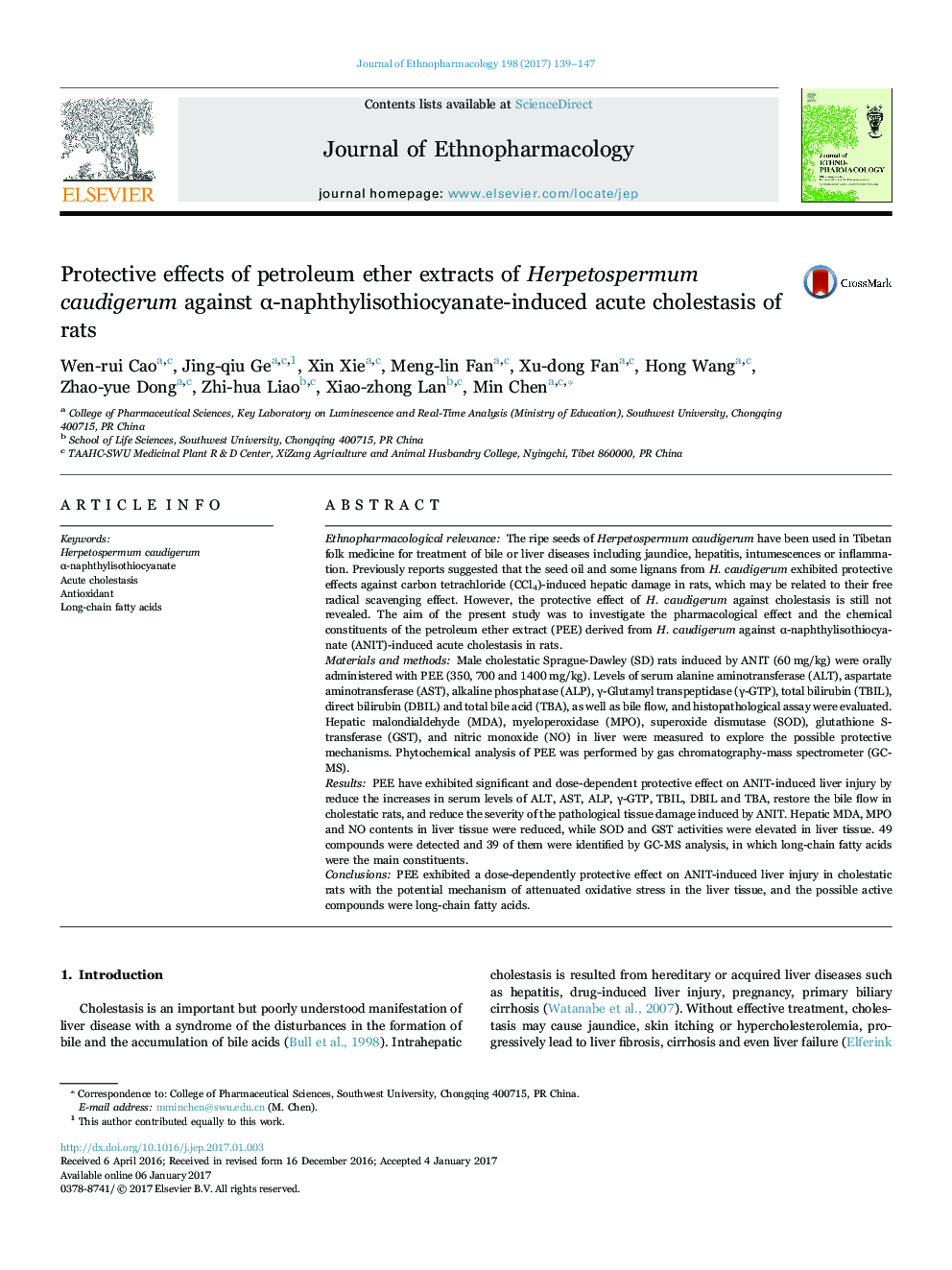| کد مقاله | کد نشریه | سال انتشار | مقاله انگلیسی | نسخه تمام متن |
|---|---|---|---|---|
| 5556320 | 1560364 | 2017 | 9 صفحه PDF | دانلود رایگان |

Ethnopharmacological relevanceThe ripe seeds of Herpetospermum caudigerum have been used in Tibetan folk medicine for treatment of bile or liver diseases including jaundice, hepatitis, intumescences or inflammation. Previously reports suggested that the seed oil and some lignans from H. caudigerum exhibited protective effects against carbon tetrachloride (CCl4)-induced hepatic damage in rats, which may be related to their free radical scavenging effect. However, the protective effect of H. caudigerum against cholestasis is still not revealed. The aim of the present study was to investigate the pharmacological effect and the chemical constituents of the petroleum ether extract (PEE) derived from H. caudigerum against α-naphthylisothiocyanate (ANIT)-induced acute cholestasis in rats.Materials and methodsMale cholestatic Sprague-Dawley (SD) rats induced by ANIT (60 mg/kg) were orally administered with PEE (350, 700 and 1400 mg/kg). Levels of serum alanine aminotransferase (ALT), aspartate aminotransferase (AST), alkaline phosphatase (ALP), γ-Glutamyl transpeptidase (γ-GTP), total bilirubin (TBIL), direct bilirubin (DBIL) and total bile acid (TBA), as well as bile flow, and histopathological assay were evaluated. Hepatic malondialdehyde (MDA), myeloperoxidase (MPO), superoxide dismutase (SOD), glutathione S-transferase (GST), and nitric monoxide (NO) in liver were measured to explore the possible protective mechanisms. Phytochemical analysis of PEE was performed by gas chromatography-mass spectrometer (GC-MS).ResultsPEE have exhibited significant and dose-dependent protective effect on ANIT-induced liver injury by reduce the increases in serum levels of ALT, AST, ALP, γ-GTP, TBIL, DBIL and TBA, restore the bile flow in cholestatic rats, and reduce the severity of the pathological tissue damage induced by ANIT. Hepatic MDA, MPO and NO contents in liver tissue were reduced, while SOD and GST activities were elevated in liver tissue. 49 compounds were detected and 39 of them were identified by GC-MS analysis, in which long-chain fatty acids were the main constituents.ConclusionsPEE exhibited a dose-dependently protective effect on ANIT-induced liver injury in cholestatic rats with the potential mechanism of attenuated oxidative stress in the liver tissue, and the possible active compounds were long-chain fatty acids.
211
Journal: Journal of Ethnopharmacology - Volume 198, 23 February 2017, Pages 139-147